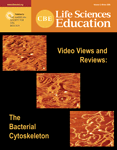How Teaching Matters
Harold Wenglinsky's paper “How Teaching Matters: Bringing the Classroom Back into Discussions of Teacher Quality” (www.ets.org/research/pic) analyzes how the attributes and classroom practices of teachers affect the performance of eighth-grade students on standardized tests in science. By correlating student performance on the 1996 eighth-grade National Assessment of Educational Progress (NAEP) science test with NAEP surveys of the attributes and classroom practices of the same students' teachers, Wenglinsky identified two teacher attributes and two teacher practices that are highly correlated with superior student achievement.
The two teacher attributes are as follows. 1) Academic preparation of teachers. Students taught by teachers who majored or minored in science or science education in college performed 39% of a grade level above students of teachers who did not have this educational background. 2) Teacher professional development in laboratory skills. Students in classes of teachers whose postcollege professional development included laboratory training performed 44% of a grade level above students whose teachers did not have such training.
The two teacher practices are as follows: 1) Teacher implementation of subject-appropriate and validated, hands-on classroom and laboratory exercises. Students exposed to such exercises weekly were 40% of a grade level ahead of students who participated in such activities monthly or less. 2) Weekly point-in-time short-answer and multiple-choice tests. Students whose teachers used such assessments were 92% of a grade level ahead of those whose teachers used such tests less frequently. According to Wenglinsky, students in classes of teachers who possess both attributes and use both practices were more than a grade level ahead of students in classes of teachers possessing neither attribute and using neither practice. Regrettably, Wenglinsky did not publish these findings in a peer-reviewed journal, so that these attributes and practices are infrequently cited.
Two of the four attributes and practices identified by Wenglinsky (i.e., teacher laboratory skills and implementation of hands-on classroom exercises) are the central focus of Columbia University's Summer Research Program for Science Teachers (www.scienceteacherprogram.org) and of other Science Work Experience Programs for Teachers. Data to be published elsewhere show that teacher participation in Columbia's program has a very positive impact on their students' success in passing a New York State Regents exam in science.
If Wenglinsky is correct, science teachers who participate in professional development programs that focus on improving their laboratory skills, and that encourage them to implement more hands-on exercises and weekly point-in-time short-answer and multiple-choice tests in their classes, will be more successful in raising the achievement level of their students than teachers who participate in programs that focus on other aspects of science, education, or both. Confirmation of this postulate could greatly simplify the task of improving middle and high school science education. For this reason alone, it is important to test Wenglinsky's conclusions rigorously and soon. Although they surely reflect an oversimplification of the measures needed to improve U.S. secondary science education, they are so congruent with the focus of Columbia's Summer Research Program, and with the very positive impact it has on interest and achievement in science of students of teachers who participate in it, that I felt it important to bring this article and these ideas to the attention of the readership of CBE—Life Sciences Education.
ACKNOWLEDGMENTS
S.C.S. is the John C. Dalton Professor of Physiology and Cellular Biophysics and of Medicine and Director of Columbia University's Summer Research Program for Science Teachers.



